Affiliate disclosure: This post may contain affiliate links. Please see our Privacy Policy.
Pressing cider is a great way to preserve the tasty goodness of apples all winter long. Cider can be canned as fresh juice, frozen or fermented into hard cider, all of which keep for months if not years.
The trick is, how do you make cider without breaking the bank? We spend years saving up for a double-barrel cider press, and I had to promise it’d be my birthday present every year for the next decade. Those things aren’t cheap!
I recently had a reader named Sasha contact me and tell me about her homemade cider press that she put together from recycled materials in minutes. She’s seeing yields comparable to our fancy press and for free!
Sasha tells me that her “press is two buckets inside of each other upside down in a stockpot to catch it. Then I stand on it, then my husband does and then we stand on it together. I’ve been able to get about 3 quarts each time out of a reusable bag full.”
Really? Buckets inside each other with body weight, that’s it? I had to see it. I asked her to send pictures so I could share them with you all.
How to Build a DIY Cider Press for Free
Materials:
- 5 Gallon Bucket
- Slightly Smaller Bucket (or large storage Tupperware)
- Flour sack or pillowcase
- Large Stock Pot or Even Bigger bucket
- Body weight
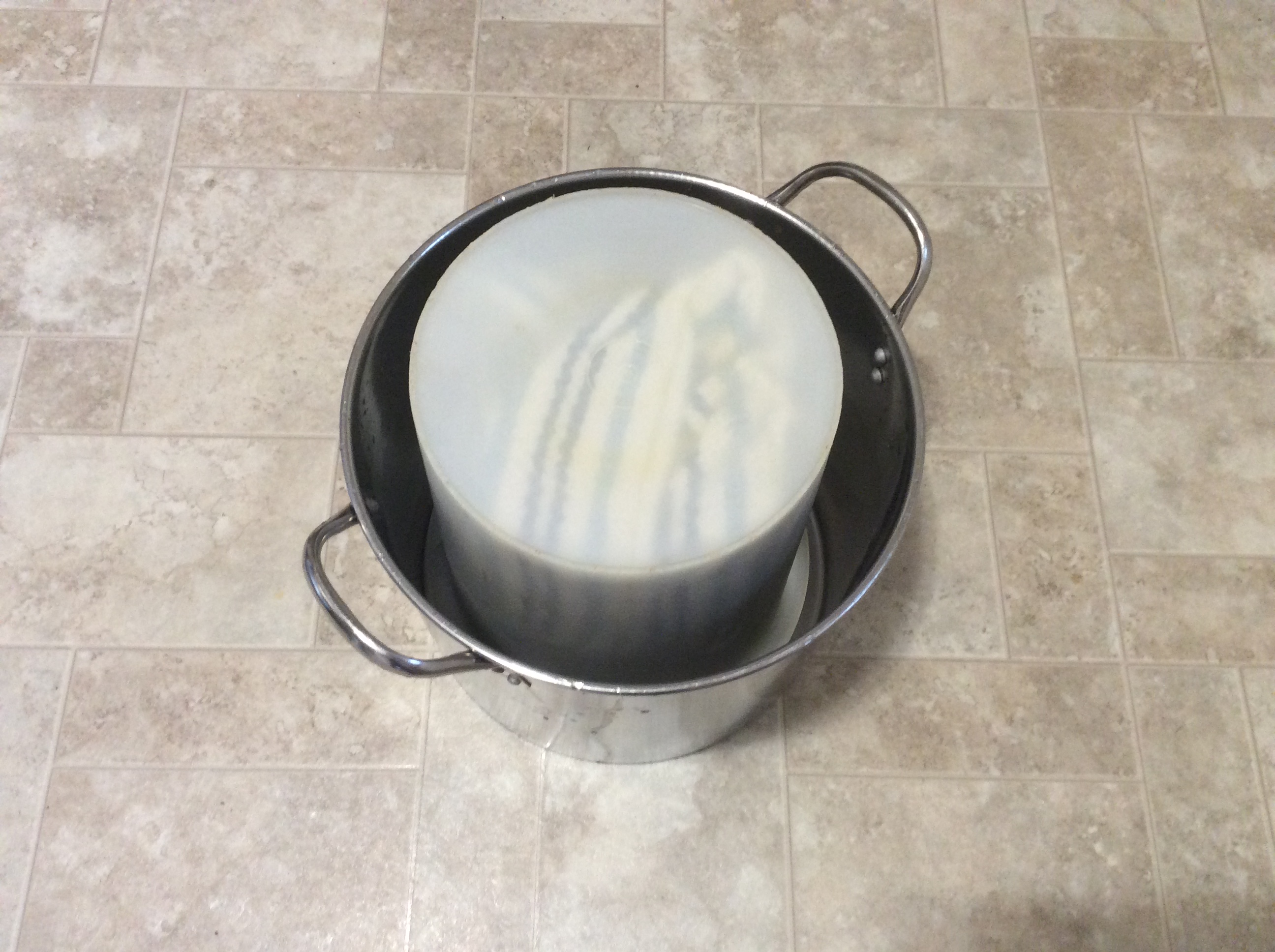
Table of Contents
Start by chopping the apples as finely as you can and then putting them into a flour sack or pillowcase. Pulsing with a food processor might work well too.
I was told these apples froze accidentally, which probably helps with juice extraction. The freezing will help pop the cells and get more juice out of the apples.
Place a smaller bucket upside down inside a large stockpot and put the sack of apples on top.

Cover the apples and the smaller bucket with a 5-gallon bucket. See what she’s done here?
She’s sandwiched the apples between two buckets, but because the inner bucket is smaller, there’s still space for the juice to escape in the space between the buckets. It then flows down the sides of the inner bucket into the stockpot.
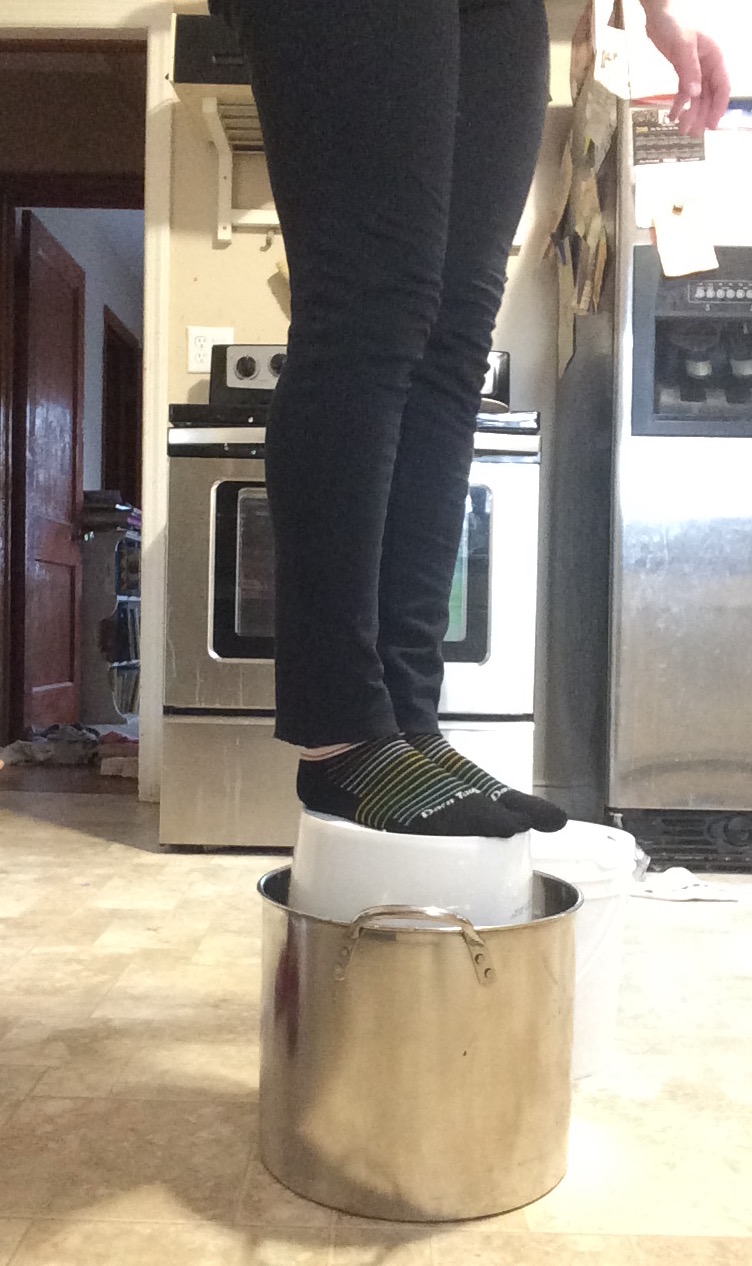
At this point, just press the apples with increasing amounts of weight. Sit on it. Then stand on it. Then have 2 people stand on it.
She reports yields of about 3 quarts from a single sack of chopped apples, which looking at the pictures tells me she’s doing about as well as my fancy press. Needless to say, I’m impressed.
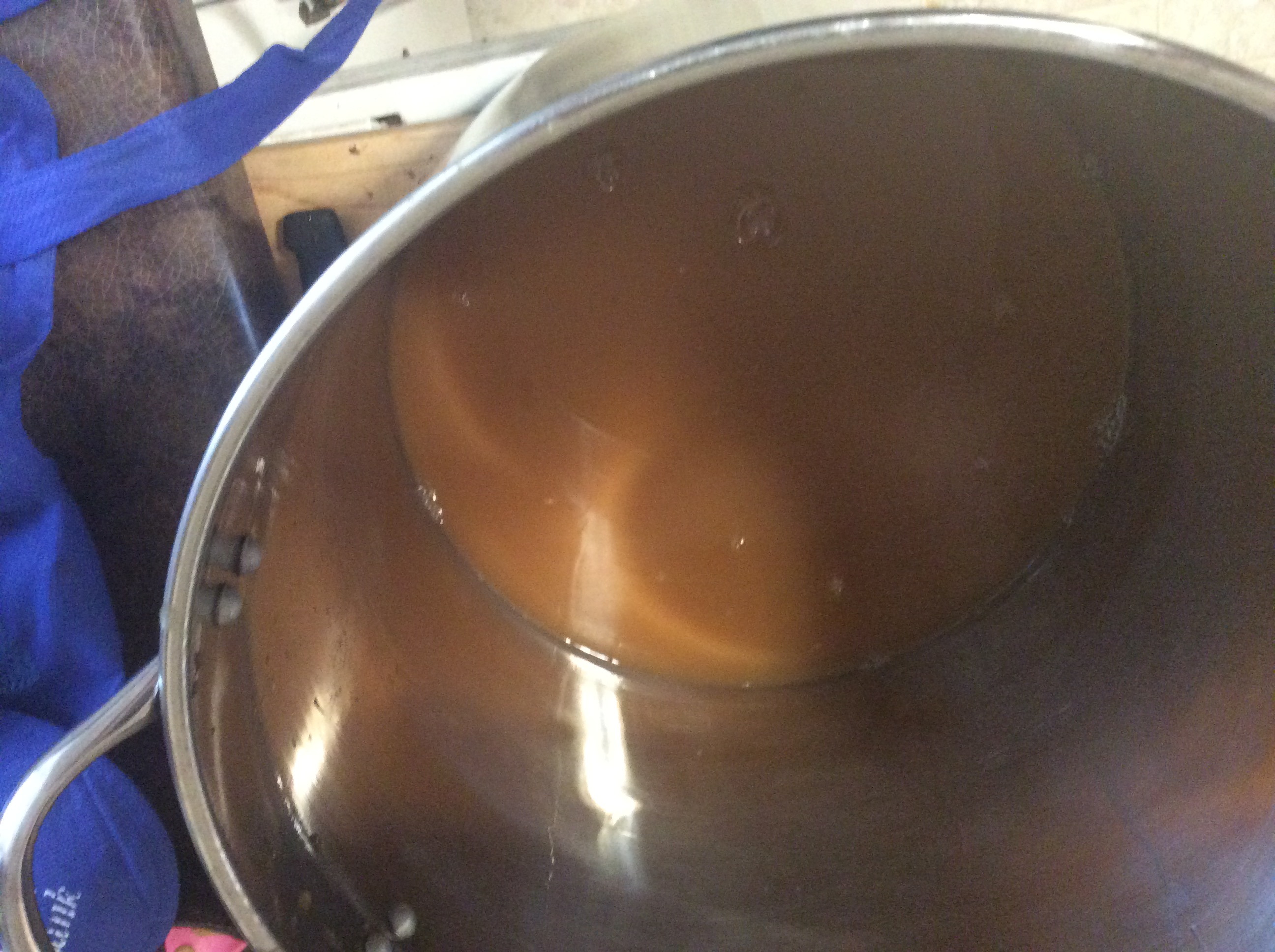
Here’s her description of the process, “I used a huge Tupperware container it doesn’t have the size on it but my aunt used it to store flour. I put some towels inside it for support so I wouldn’t blow the bottom out. The lid seals really well so I never had any leak in on the towels. The other bucket (about 3 gal) is from target’s bakery. My mom works there and has someone save them for her. She and my dad used them for tapping one year. Plus a flour sack dishtowel for holding the mash. I double over another one as a filter when pouring into the jars just in case any of the mash leaked out and got in it. I consistently had about 3 quarts from one reusable grocery bag full. Plus the mash still had quite a bit of moisture. I did run one batch of the already squeezed mash through my squeezo to do as apple butter. That yielded about a quart of mash for the apple butter.”
All in all, the total yield was 3 quarts of cider for home canning and one quart of apple butter.
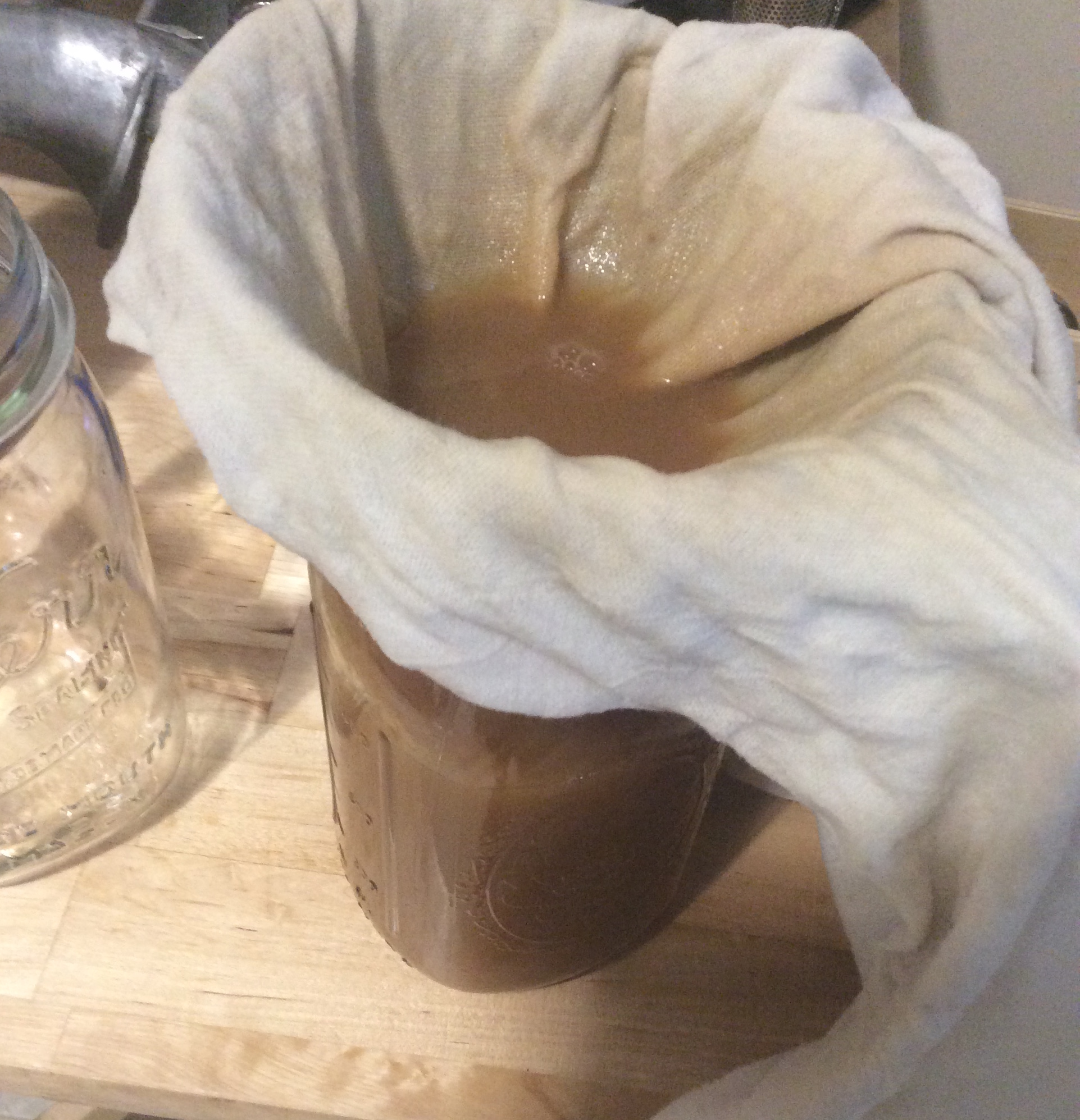
Thanks so much to Sasha for sharing her homemade cider press!
Other Ideas?
Have you built your own cider press? How’d it work? Leave a note in the comments.
Or better yet, send pictures of your invention to Ashley dot Adamant at gmail dot com and I’ll publish your photos and story so others can try it.
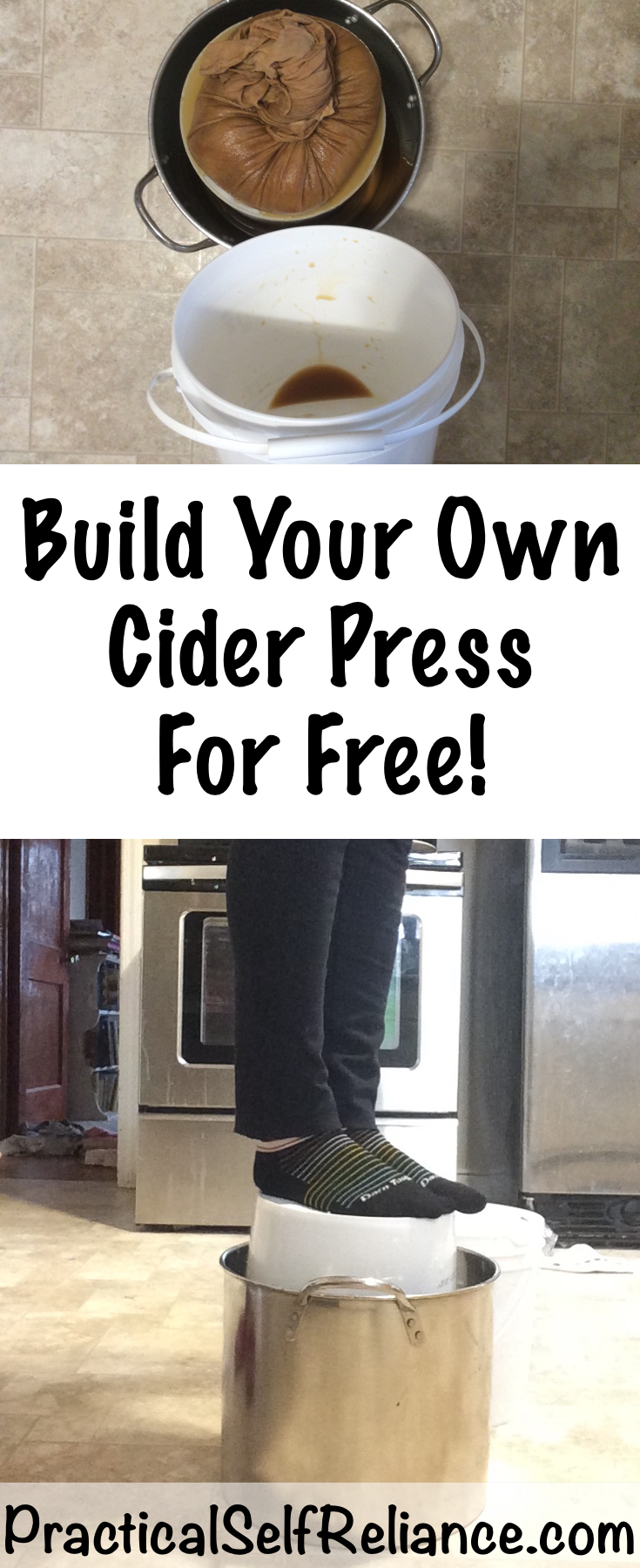
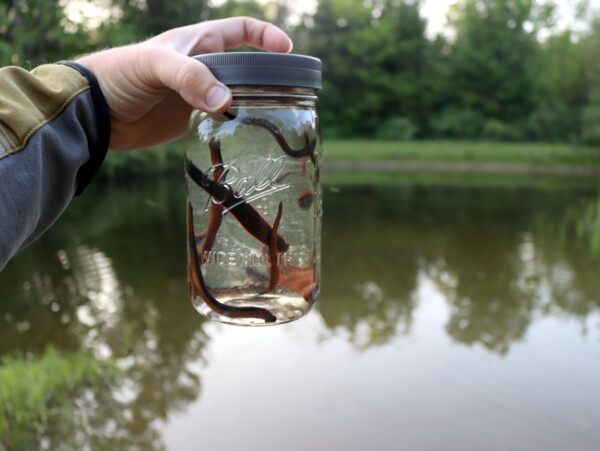
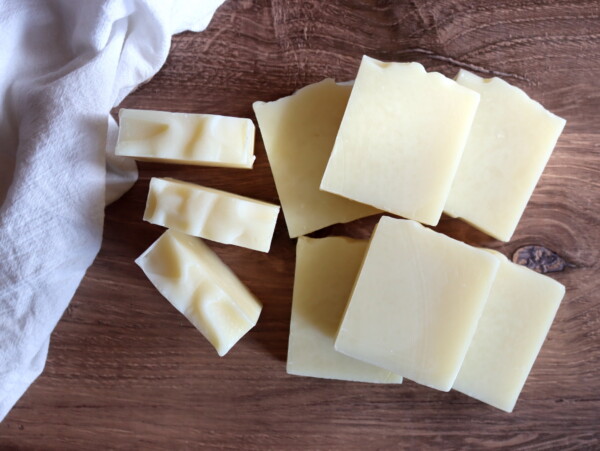
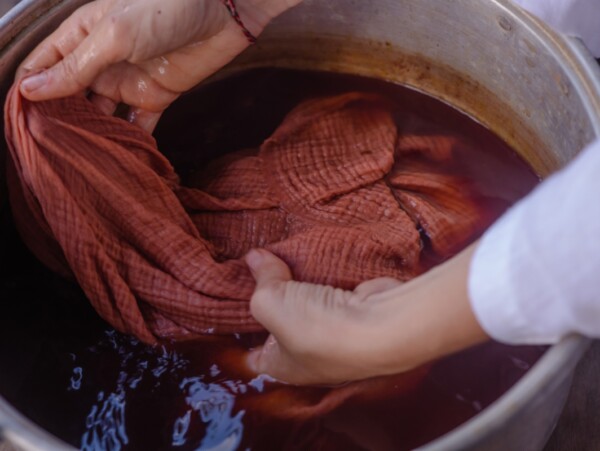
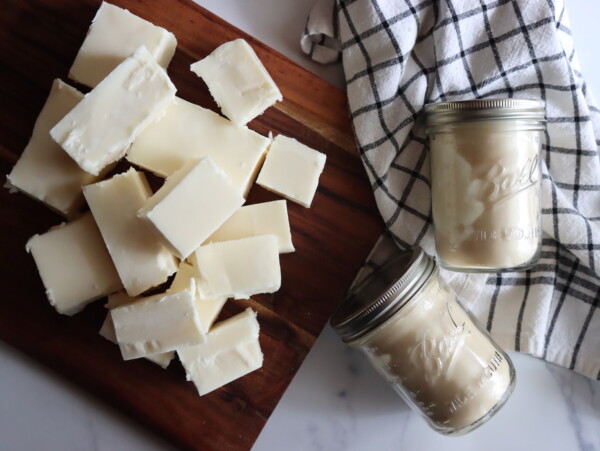










Please send me a Pear Jelly receip.
Here you go!
https://practicalselfreliance.com/pear-jelly/
We read this out of curiosity and were like, no, this is far, far too complicated. Toss your fruit into the food processor, then if it’s a small batch use a nut milk bag (doing it in batches since most of it is pulp) or if it’s a large batch use a pillowcase then literally just squeeze it into a pot or bowl. 100% plastic free as well.
I have often wondered What about any nasty wildlife in the apples and pears when pressing?
I would definitely remove any worms or insects that you might find unless a little extra protein doesn’t bother you. In which case you can just leave them.
I have used a juicer!! It took about 3 hours to do my large batch of apples 4 gallons of juice worth! I had to clean the juicer every 15 apples or so but you can do it, you just have to make sure to clear out the backlog of pulp as you go.
I was thinking of making something similar to what John said with a car jack, but this seems easier. Just a thought on how to get more press with this method is using a heavy duty ratchet strap that goes over the top and maybe have each end tied to the bottom of a tree or something else that will not move. I have a feeling my 3K pound strap will have more force than a couple people. I have a big storage bucket that I only use for mixing massive amounts of food in 18″H and 24″W about, something that size would probably need to be the catch basin for more stability. Another thought, have the inner bucket with some small holes drilled in it to help with drainage.
Kind of cool, but I am really skeptical of the amount of juice being in the same range as what a well-designed and properly used manufactured press. The physics behind the differing pressures involved is just not going to allow it.
I built a press from 4 by 4s and a car jack. Build a solid foundation from 4 x4s about 18 by 18 inches square. top that with 3/⁴ inch plywood then two 24 inch long upright 4by4s support a 4by4 parallel to the base. The best way to describe it is a flat basket with handle all made out of 4by 4s and plywood. I Popped a hole in the side of a large deep baking sheet and place a bucket under the hole. The apples get coarsely chopped or ground then bagged in cheese cloth then placed in the baking sheet. On top of the apple bag is a chunk of wood the a steel plate then a small screw style car jack the jack pushes against the horizontal 4×4 that is bolted to the plate the apples sit on. It worked great. I wouldn’t use a bottle jack since they can leak.
Thanks so much for sharing that.
Hello, I’m wondering if it would be possible to contact the original person who sent you these instructions? I had a few questions about their process! Anyhow, let me know. Thanks so much for your time!
I used to make cider with friends with their cider press. Since moving across the country, I have used a juicer. I find cider from a juicer is also poorer quality: there a lot more sediments in it and the taste is just not quite the same. Still good though, and friends here who’ve never had cider out of a press think the stuff from the juicer is amazing. Hope that helps.
I have the same question about using a juicer 😀
Yes, I’d like to know the difference between a juicer and a press as well. I also have a juicer. Perhaps its too much juice and not enough mash?
What’s the difference using the press and using a juicer? I have a juicer, I’m wanting to preserve some of my apples so they don’t get wasted and so was thinking about apple butter but came across your post. I’m from Scotland and not really experienced in canning and preserving foods but would like to try.
I think the difference is quantity.
You could process a lot of apples in a press, but with a juicer you are limited to what the juicer can handle without overheating. This is just speculation though so there could be other reasons as well.
I’m from Lochgilphead Scotland. I’ve just started growing veg in the past year and was amazed at the outcome, especially my first attempt at pumpkin. I know these can be stored whole, as can a lot of fruit and veg, but space is short till I get a bigger shed. So this year started canning, seems to take a while but then I guess with more practice I’ll get faster. Have an apple tree in garden and this year it produced a lot, even more surprising, 3 different types apples? So far have tried apple juice, jelly, pie filling & butter, with the exception of one jar which had to be resealed, it went quite well. Still have lots of leftover apples, so was happy when I found your site, that I wouldn’t have to spend a fortune on equipment. Totally love it. Will be attempting cider, and hope it doesn’t explode like my dad’s used to lol, wrong bottles.
I decided to make cider yesterday with what i had in my kitchen. I had a blender, an apple core thing you push over the apple that slices and cores it, some large wide mouth mason jars with a lid made for straining sprouts. I cored and sliced the apples and blended them up very fine with some water and the. Put the liquidy pulp in the mason jar tilted sideways in a bowl. As it filtered out i transfered it to my soup pot and repeated the process. I shook them over the stock pot quite a bit and then when i had enough i brought the cider to a boil for a while. It wasnt sweet enough and could have used kore flavor probably owing to my adding more water than i needed to, so i added lemon juice and sugar to taste and ised the pulp for apple butter. I cheated and put the pulp in the blender after it had cooked a while but the texture wasnt what i wanted. Lot of work but it came out good. I will try the bucket method next time
My press came from what I had on hand.First, I run whatever fruit through a meat grinder and put it in a pillow case. Then, I use the wringer on my mop bucket to squeeze all the juice out.
A meat grinder is a great idea!
Brilliant!! We have an old asian pear tree that was loaded this year and I have to many that they start to go bad and then have to go to the pigs. I’m going to try this!
I’d like to do the same. How did it turn out? Do you need to wait until the pears are soft?
what was your method to make apple butter with the leftover mash- how long did you cook it for, did you add any water for the cooking, etc?
Since this was a reader contribution, I can’t say the exact process they used to make apple butter with the leftover mash. Given that most of the liquid and sugars were removed, I’d imagine they had to add in a little bit of water and sugar to make a good apple butter. That’s just my guess though.
Ive done this…i added a half bag of cinnamon red hots and 1.5 cups of water…worked out grest!